Blog Archives
Feeling the drag? Step up your car’s performance with Trust My Garage
If you’re hitting the UK’s roads, it’s important to ensure your vehicle is performing well when you need it to – so check out our top tips on how to optimise your motor with Trust My Garage! It could even help with your safety and running costs; find out more by reading on.

Does your vehicle contain everything but the kitchen sink?
If you like to travel with all your personal possessions in your car, you’re out of luck! Gym bags, books and unnecessary tools might not weigh much individually but the grouped effect adds up quickly, and will affect your car’s fuel efficiency as it means the extra weight will cause you to burn more fuel to achieve your car’s usual level of performance.
It’s a simple matter of cleaning out any unnecessary items from your vehicle, as well as any rubbish that you may have accumulated over time since your last clean. By losing the extra items you can gain some performance – and maybe even go further between fuel station trips!

Air-con giving you a frosty feeling?
Did you know that when you use your car’s air-conditioning it could raise your car’s fuel consumption by as much as 8-10%? (info)
In hot weather it’s understandable to have the air-con running, and at high speeds it’s better for performance than opening a window for a breeze, but if you leave you air-con running most of the time when you’re driving it can impact performance and economy without you even realising!
If you want to utilise your air-con effectively, you should run the system once a fortnight for five minutes to make sure the system remains free of issues – but if you suspect there’s a problem with your air-con or it doesn’t feel cold anymore you can take your vehicle to your local Trust My Garage member for a check or re-gas service!

Racking up the boxes on your motor’s roof?
If you use roof racks and/or boxes on your motoring trips be sure to remove them in-between journeys. By leaving them in place you affect the aerodynamic design of your vehicle, which then increases drag and affects performance, including fuel consumption!
The easiest solution is to remove your roof equipment whenever it is not in use, but if this is impractical there are many types of lightweight options – although the faster you travel, the more this will impact your vehicle’s performance.
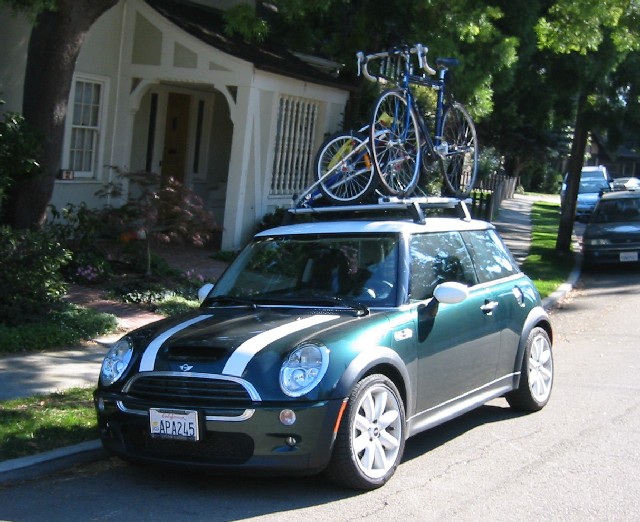
Is your motor feeling tyre-d?
Correct tyre pressures are important in order to stay safe on the road. If your tyres are under/over inflated then handling and grip will worsen, potentially causing irregular or unpredictable car wear as well as affecting handling behaviour. Tyres that aren’t fully inflated are also more likely to suffer from a sudden rapid deflation and will suffer premature wear on the outside edges of the tyre, meaning the wheel rim and tyre will be more susceptible to impact damage.
Checking your vehicle’s tyre pressure is easier than you might think! You can check and correct your tyre pressure at most UK petrol stations using a pay-per-use air and water station, or you can purchase your own tyre pressure gauge – the choice is yours.
If you aren’t sure what pressure is correct for your vehicle’s tyres you can refer to your Owner’s Manual. On many vehicles there is also a label on either the door pillar or inside the filler flap that provide tyre pressure information. Details should be provided in either/both BAR and PSI, and you can adjust your pressures to the recommended figure.
The tread of a tyre refers to the rubber on its circumference that makes contact with the road or ground. The legal limit for minimum tread depth in the UK is 1.6mm across the central three-quarters, however it is recommended to keep your tyres at 3mm or above for optimum grip. Drivers who fail to comply with the regulations face a fine of up to £2,500 and three penalty points for each illegal tyre.
Tread depth is important to maintain good grip on wet roads but, as the tread wears down, the tyres will lose the ability to grip well. The ‘20p test’ is a quick way to check the tread depth. Place a 20p coin into the main tread grooves at three points across the tyre and then repeat around its circumference. If the outer band is visible, the tyres may be unsafe or illegal and need to be checked by a professional garage or tyre specialist.

Bad performance? Not with this economy!
The best way to improve the performance and efficiency of any vehicle is to drive with economy in mind.
Looking further ahead when driving and ensuring keen observation can help you spot any potential hazards or traffic fluctuations earlier in your journey – giving you time to anticipate and use brake or accelerate at a gentler pace. This style of driving doesn’t affect your vehicle’s fuel economy in the same way that sharp braking and accelerating does, and it can also help minimise the wear on your tyres too!
Also, dropping your cruising speed by a few miles per hour will make a huge difference to your fuel costs and won’t add too much extra time to your journey. As an example, a journey of 100 miles driven at 70mph will take you 86 minutes, while driving at 60mph would only add 14 minutes to that time and you will use 10% less fuel.
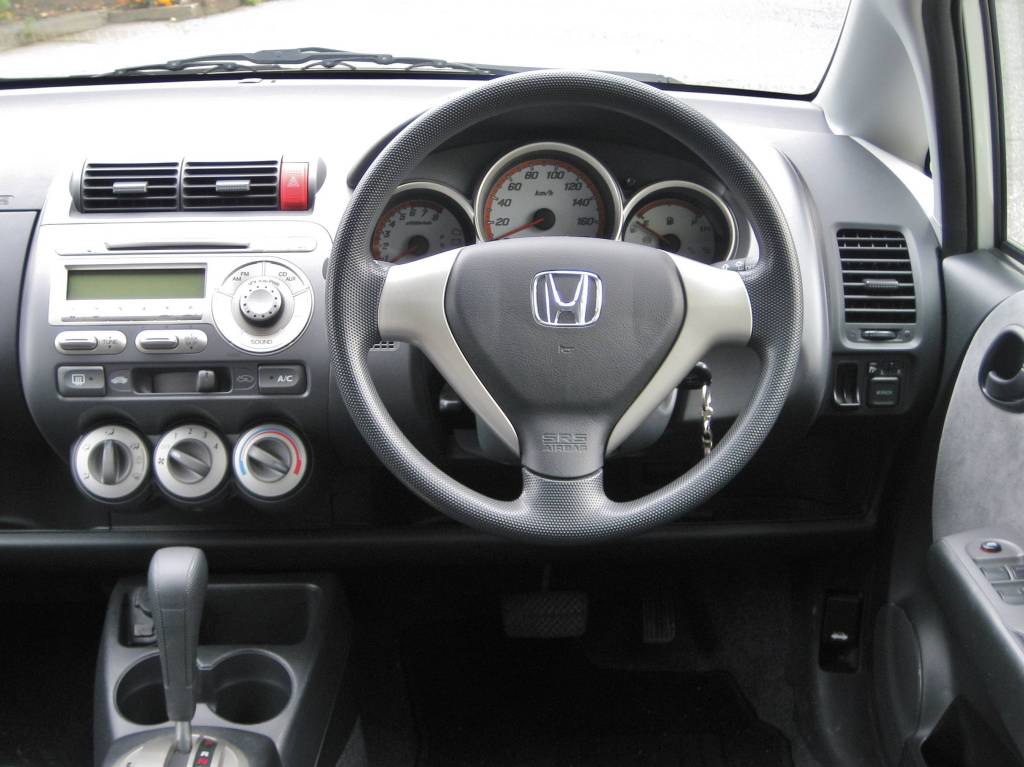
Why you can Trust My Garage to take care of your servicing and MOTs
Another great way to ensure your vehicle is performing at its best is by keeping up with your yearly MOT requirements and ensuring it’s serviced regularly.
For a professional garage experience, you can find a local CTSI approved Trust My Garage member by visiting the Trust My Garage website’s ‘Find a Garage’ map! You can even try it out here:

Every garage in Trust My Garage are members of the Independent Garage Association, which is part of the RMI, one of Britain’s oldest motor trade organisations. IGA members are true professionals who have to comply with a strict code of practice, so they can help you motor on happily and safely.
Each and every customer of all Trust My Garage members can rely on using a nationally recognised brand to help you and your vehicle get the best value service for you and your vehicle – and you can find out more by visiting us at TrustMyGarage.co.uk or checking out our Facebook and Twitter pages!

Motoring forwards – Find out what drives your vehicle with Trust My Garage
There are many elements to driving a car, but one of the most important is how it’s propelled forwards! Find out all you need to know about which type of “wheel drive” could work best for you with the Trust My Garage blog – read on to discover more.
Front-Wheel Drive
Front-wheel drive is the most common layout for the engine and transmission set-up in the new car market and has been so for the last few decades. It works by the engine only sending power to the front two wheels of the vehicle (hence the name), effectively pulling the car along from the front.
Front-wheel drive is so popular in the car market because it is less complex and more affordable to engineer, compared to rear or four-wheel drive, and it also is better for fuel economy!
However, front-wheel drive does have certain limitations which make it less than ideal for high performance cars. Although many hot hatches do use it, front-wheel drive can’t offer the same kind of rapid acceleration you see from rear or four-wheel drive cars.

Rear-Wheel Drive
While most front-wheel drive cars also sport their engines in the front of the vehicle, with rear-wheel drive vehicles the engine can be located in different places (such as in the middle or rear of the vehicle). Rear-wheel drive works in the opposite manner to front-wheel drive, with the engine sending power to the rear two wheels of the vehicle and using it to push the vehicle forwards from the back.
Rear-wheel drive offers better acceleration than front-wheel drive. Unlike front-wheel drive, it is possible to achieve optimal 50/50 front/rear weight distribution with a rear-wheel drive car, which offers better balance and handling in a vehicle.

However, rear-wheel drive often compromises cabin practicality because the powertrain requires a driveshaft. This creates a bump in the passenger cabin, losing space for anyone sat in the vehicle. Rear-wheel drive is also less efficient than front-wheel drive and can be difficult for drivers to handle if there’s no traction control or road conditions are slippery due to the weather.
Both front- and rear-wheel drive can also be referred to as “Two-wheel drive”, as they only use two of the vehicle’s wheels to propel it forwards.

All-Wheel Drive
All-wheel drive offers a setup in which the engine’s power gets sent to a vehicle’s four wheels for maximum traction. All-wheel drive is all about varying the amount of power sent to each wheel, either mechanically or electronically.
All-wheel drive can either be offered as a part- or full-time system, depending on the model of vehicle and driver preferences. Some models now feature a system that allows the driver to disconnect the rear wheels when driving at speed, reducing drag and improving fuel economy. More expensive systems may also have a feature that engages and disengages all-wheel drive automatically based on the road conditions, detected by sensors around the vehicle and calculated by an onboard computer.

4-Wheel Drive
Sometimes referred to as 4×4, four-wheel drive powertrains are largely associated with SUV models, but can also be found on numerous family and executive cars, especially among vehicles with higher specs.
This system’s main distinction is that it’s typically used on vehicles designed and built to handle the unpaved wilderness.
Unlike all-wheel drive, it sends power to all four wheels equally and without variation, meaning each wheel will spin at the same constant rate as all the others. The equal split of power is great for manoeuvring through tough, low-traction situations, but it isn’t very friendly on the pavement.

Driving a four-wheel drive car on solid ground can make simple actions like turning around in a tight street very difficult, because the wheels are no longer in sync. Most modern four-wheel drive vehicles are equipped with a part-time system, meaning they operate in two-wheel drive mode in normal driving conditions. This way, the driver can engage the four-wheel drive system manually from the cabin only where necessary.

Keeping your vehicle in wheely good condition
Regardless of how your motor is propelled forwards, it’s important to keep it in a safe and legal driving condition. For a professional garage experience, you can find a local CTSI approved Trust My Garage member by visiting the Trust My Garage website’s ‘Find a Garage’ map!
Apart from finding a garage nearby, you can also read reviews from other motorists about the members in your area to help you decide which garage is right for you. Try it out here:
Every garage in Trust My Garage are members of the Independent Garage Association, which is part of the RMI, one of Britain’s oldest motor trade organisations. IGA members are true professionals who have to comply with a strict code of practice, so they can help you motor on happily and safely.

Each and every customer of all Trust My Garage members can rely on using a nationally recognised brand to help you and your vehicle get the best value service for you and your vehicle – and you can find out more by visiting us at TrustMyGarage.co.uk or checking out our Facebook and Twitter pages!

What to do when… your vehicle needs some TLC
With the average UK motorist making 986 trips and covering 6536 miles per year in their car (source), it’s possible that some drivers can leave their motor in need of a little tender loving care when it comes to basic maintenance issues – but how can you make sure you give your vehicle the care it needs? Find out with the Trust My Garage blog!

Tyres
You should check your tyre pressures at least every two weeks – and if your vehicle has a spare, check that too! Under inflated tyres increase fuel consumption and reduce vehicle handling, and they also lead to increased tyre wear, which means your tyres may require replacing sooner than you expect.
The legal limit for minimum tread depth in the UK is 1.6mm across the central three-quarters of the whole tyre, however it is recommended to keep your tyres at 3mm or above for optimum grip. Drivers who fail to comply with the regulations face a fine of up to £2,500 and three penalty points for each illegal tyre. You should also look out for cuts or wear anywhere on the tyre and replace them if you can see tears or bulges.

Engine oil
Use your dipstick (if your vehicle has one) to check oil levels every couple of weeks, when the car is warm and on level ground. Stop the engine and wait a few minutes for the oil to settle, remove the dipstick and wipe it clean.
Push the dipstick all the way in, wait a second, and then withdraw it and check the level. The oil should be between the MIN and MAX marks. If the oil is dark or dirty or underneath the minimum line (or both!) It should be topped up/changed as soon as possible.
Many modern vehicles use an electronic system to check their oil level, so if your vehicle uses this you should familiarise yourself with the system.
Screenwash
It is illegal under the Road Vehicles Regulations 1986 to not have screenwash in your vehicle. Keep it regularly topped up with a screenwash additive – one that prevents it from freezing and clears oily grime from your windscreen for clear vision.
Don’t forget to keep the inside clean too, to avoid your vision being reduced due to glare – especially when the sun gets lower in the sky during daily commutes to and from work.

Water
Every week, while your engine is cold, check your coolant level is between the MIN and MAX marks – if it’s below the minimum line, top it up as required, and check it again after your next journey.
If your coolant level regularly requires topping up you may have a leak in the vehicle’s cooling system, so get it checked out by your local garage!
Windscreen
Keep an eye out for stone damage and, if you spot any chips, get them repaired as soon as possible – as they can grow and crack if left alone. If the damage can’t be repaired, or it’s in a place where it could distract you, your windscreen may need to be replaced.
Many motor insurance policies provide discounted or free chip repairs, and detail how to proceed with your repair.
Bodywork
It’s important to give your car panels an occasional check for any damage, or signs of rust. If you notice any rusty or damaged areas, you can contact a local bodyshop to see how best to proceed with any repairs.
Lights
Take a walk around your vehicle or ask a friend to help check all your lights – including indicators, reversing lights, brake lights and fog lights – once a week. Look out for blown bulbs and cracks or dirt on the lenses.
Your vehicle can receive a Minor Defect notification on its MOT if your indicators do not “flash amber” in compliance with the requirements, so if you have any issues with fading indicator lights you should replace them or have a local garage inspect them – you may only need a new bulb!
If a bulb has broken and you don’t want to replace it yourself you can also take your vehicle to a local garage, who can fix the issue and help you avoid a penalty.

Not sure how best to care for your car?
Our ‘What to do when…’ series can provide some further tips and insight across other areas of motoring and vehicle maintenance to help you ensure your motor is running at its best! You can check out our other posts in the series here.
If you’re looking for a professional local garage to help give your car some TLC you can find a local CTSI approved Trust My Garage member by visiting the Trust My Garage website’s ‘Find a Garage’ map! You can even read reviews from other motorists about the members in your area to help you decide which garage is right for you. Try it out here:
Want to know what we do?
Trust My Garage is a collection of Britain’s trusted local garages – each one different and all dedicated to the highest standards of skill and personal service.

Every garage in Trust My Garage are members of the Independent Garage Association, which is part of the RMI, one of Britain’s oldest motor trade organisations. IGA members are true professionals who have to comply with a strict code of practice.
Each and every customer of all Trust My Garage members can rely on using a nationally recognised brand to help you and your vehicle get the best value service for you and your vehicle.
Don’t forget: If you can think of any more top TLC tips, leave us a comment in the box below!

The Highway Code – How well do you know the rules of the road?
The Highway Code – How well do you know the rules of the road?
The Highway Code is a set of information, advice, guides and mandatory rules for all road users in the United Kingdom. It operates as a tool to promote road safety – but how well do you know the rules laid out in it? Find out on the Trust My Garage blog!

We’ve put together a quiz to test your knowledge across different areas of the Code, so you can find out if you know enough to write the book – or need to read it cover to cover! Try your hand at our questions below and be sure to leave a comment if you’re pleased with your score.
If a rule in the Highway Code is a legal requirement, it is identified by the use of which phrase?
- ‘Do/do not’
- ‘Should/should not’
- ‘Must/must not’
- ‘Never/always’
When passing an animal on or near the road, you should:
- Sound your horn
- Rev your engine
- Accelerate rapidly
- Drive slowly, give them plenty of room and be ready to stop

Where lanes are restricted due to roadworks, you should:
- Merge in turn with other traffic
- Slow down to a stop and turn off your engine
- Accelerate rapidly to get away from traffic
- Allow drivers from other lanes to pass but hold up vehicles behind you
When visibility is seriously reduced due to adverse weather, you must:
- Switch on your fog lights immediately
- Use your headlights when you cannot see for more than 100 metres
- Keep your headlights switched off to avoid dazzling other drivers
- Stay inside and not drive at all
What does the below arm signal mean when used to inform other road users:

- I intend to move out to the right or turn right
- I intend to slow down or stop
- I intend to move in to the left or turn left
- I intend to reverse
What is the maximum penalty fine for speeding?
- £1,000 fine (£2,500 for motorway offences)/Discretionary disqualification
- £2,500 fine (£3,000 for motorway offences)/Discretionary disqualification
- £500 fine (£1,000 for motorway offences)
- £1,000 fine (£2,500 for motorway offences)
If you have to stop your vehicle on the roadside you must:
- Open the door without checking for pedestrians
- Park facing against the traffic flow
- Only apply the handbrake if you are on a hill
- Switch off the engine, headlights and fog lights

If your vehicle breaks down, think first of all other road users and:
- Wear dark clothing and try to avoid being seen by other drivers
- Warn other traffic by using your hazard warning lights if your vehicle is causing an obstruction
- Leave the vehicle in the road for as long as possible
- Do not call for help
How do you think you did? Check out the answers below to see how well you scored!
ANSWERS
1 – C, 2 – D, 3 – A, 4 – B, 5 – C, 6 – A, 7 – D, 8 – B
If you scored well, congratulations! You know your stuff when it comes to the Highway Code. If you need to brush up on the correct answers you can read the Code in full here.
Test your motor as well as your mind
Before heading out on to the road, it’s important to make sure your knowledge is up to scratch – but you should also make sure your vehicle is safe and roadworthy too! With Trust My Garage, it’s simple to find a reputable local garage to help you with your motor’s servicing, MOT and maintenance.
With over 2,900 members across the UK, you’re never far away from a TMG member. We’ve even created a handy search function so you can locate your nearest TMG-approved garage with ease!
Simply pop in your postcode and our ‘Find a Garage’ map will show you all the TMG members in your area – and you can even read reviews from other customers if you’re unsure which garage is right for your needs. Try it out below:

Since 2016 Trust My Garage members have all operated to a strict Code of Conduct, which has been approved by the Chartered Trading Standards Institute (CTSI) – the national body for trading standards professionals. Trust My Garage is currently the only CTSI backed code exclusively for independent garages, so you can rest assured that you are dealing with a firm that is determined to deliver the highest levels of customer satisfaction.
Want to know more about TMG? To get more information or to contact Trust My Garage, please visit TrustMyGarage.co.uk or Contact Us here.

Using the UK’s motorway network – The Trust My Garage guide to driving safely
With approximately 2,173 miles of motorway network spanning the UK, it’s vital for motorists to understand the requirements for travelling these roads safely. If you’re looking to learn how best to utilise the system in a safe and legal manner, look no further – the Trust My Garage blog is here to help.
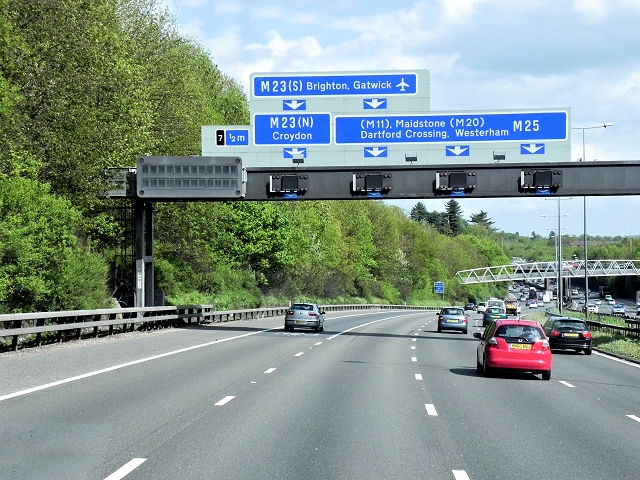
What are the motorway basics?
Motorways and dual carriageways allow traffic to travel faster and in greater safety than on ordinary roads, but it’s very important for motorists to know the rules that apply on them.
To enter, drivers use a slip road system, enabling them to filter into the existing flow of traffic already using the road, accelerating to match the traffic flow. You must give priority to traffic already on the carriageway, and not force your way into the traffic stream as this could cause other drivers to perform evasive manoeuvres, leading to an accident.
Slip roads also allow you to leave a motorway or dual carriageway, but you’ll need to be in the left-hand lane so that you can drive onto the slip road when you reach it. Move into the left-hand lane in good time to make sure you don’t have to cut in front of other vehicles or miss your exit. Motorway junctions typically have information signs at 1 mile prior to a junction and another at half a mile, to provide drivers travelling at high motorway speeds sufficient time to move to the left.

At no point – unless directed by the police, Highways England traffic officers or DVSA officers – should you stop on the motorway. If you have to slow right down or stop because there’s serious congestion ahead, you can use your hazard warning lights briefly to alert drivers behind you. Remember to turn them off when the driver behind you has slowed down.
The default speed limit on the UK’s motorway network is 70mph. However, some motorways operate as “smart motorways” or “managed motorways”, where variable speed limits and lane closures are displayed on signs on gantries above the road at regular intervals.
There are two kinds of motorway speed sign:
- If the speed limit is in a red ring, that’s a mandatory speed limit.
- If the speed limit is surrounded by flashing amber lights, it’s an advisory speed limit based on traffic and weather conditions.
To learn more about how smart motorways work, check out our blog post Driving on smart motorways – what are they and how do you use them?
What do I need to know when driving on the motorway?
Drivers should utilise the left lane wherever possible when using the motorway, and only venture to the central and right-hand lanes to overtake slower traffic before returning to the left lane after the manoeuvre is completed safely. You should never use the left-hand lane to pass a slower vehicle –known as “undertaking” – unless all lanes of traffic are moving slowly, but the left lane is moving slightly faster. Drivers should also use their indicators as normal to alert other motorists of their intention and allow them to act accordingly.
Rule 264 of the Highway Code states:
- You should always drive in the left-hand lane when the road ahead is clear.
- If you are overtaking a number of slower-moving vehicles, you should return to the left-hand lane as soon as you are safely past.
- Slow-moving or speed-restricted vehicles should always remain in the left-hand lane of the carriageway unless overtaking.
If you’re driving at night or in low-light conditions, the reflective studs in the road, commonly known as “cat’s eyes”, can also help you to determine the position of your vehicle on the road. Here’s what each coloured stud means:
- Red – Hard shoulder division
- Amber – Central reservation division
- White – Mid-lane division
- Green – Slip road division

Average speed cameras – what are they?
Average speed cameras have been installed over 250 miles on British roads, in areas around the country. They work by tracking the speed of your car between two points – so slowing down to go past the camera and then speeding up afterwards will not fool it!
The cameras will record your number plate when you pass the first camera, then again at the second, and perform a quick calculation based on the current time to work out how long it took you to travel between the two points. If the time it took you to travel is quicker than could be done at the speed limit, you’ll get a fine and penalty points on your licence.
The cameras can also operate across multiple lanes of traffic, so changing lanes won’t help you – only driving at or under the posted speed limit will.
The best method to avoid a speeding ticket is, of course, not to speed.

How can I make sure my vehicle is safe and roadworthy?
Prior to setting out on any journey, particularly longer trips, you should always check your vehicle for any visible issues or potential problems. Drivers should check:
- Engine oil, coolant and screen wash are within their respective required levels
- Tyre pressures and treads – Tyres should meet the legal minimum requirement of 1.6mm across the central three-quarters of the tyre in a continuous band around the whole of the tyre with no bulges, bubbles, cuts or tears, or you risk a £2500 fine and three penalty points per tyre – or worse! Tyre pressures should match the BAR/PSI indicated in your vehicle’s Owners’ Manual.
- Fuel level – Running out of fuel is one of the most common causes of breakdown on the UK’s motorway network, so check you’ve got enough fuel for your trip and take note of any available fuel stations en-route to fill up as necessary.
It’s also recommended that you check your lights and wipers to make sure they too are in working order and good condition.
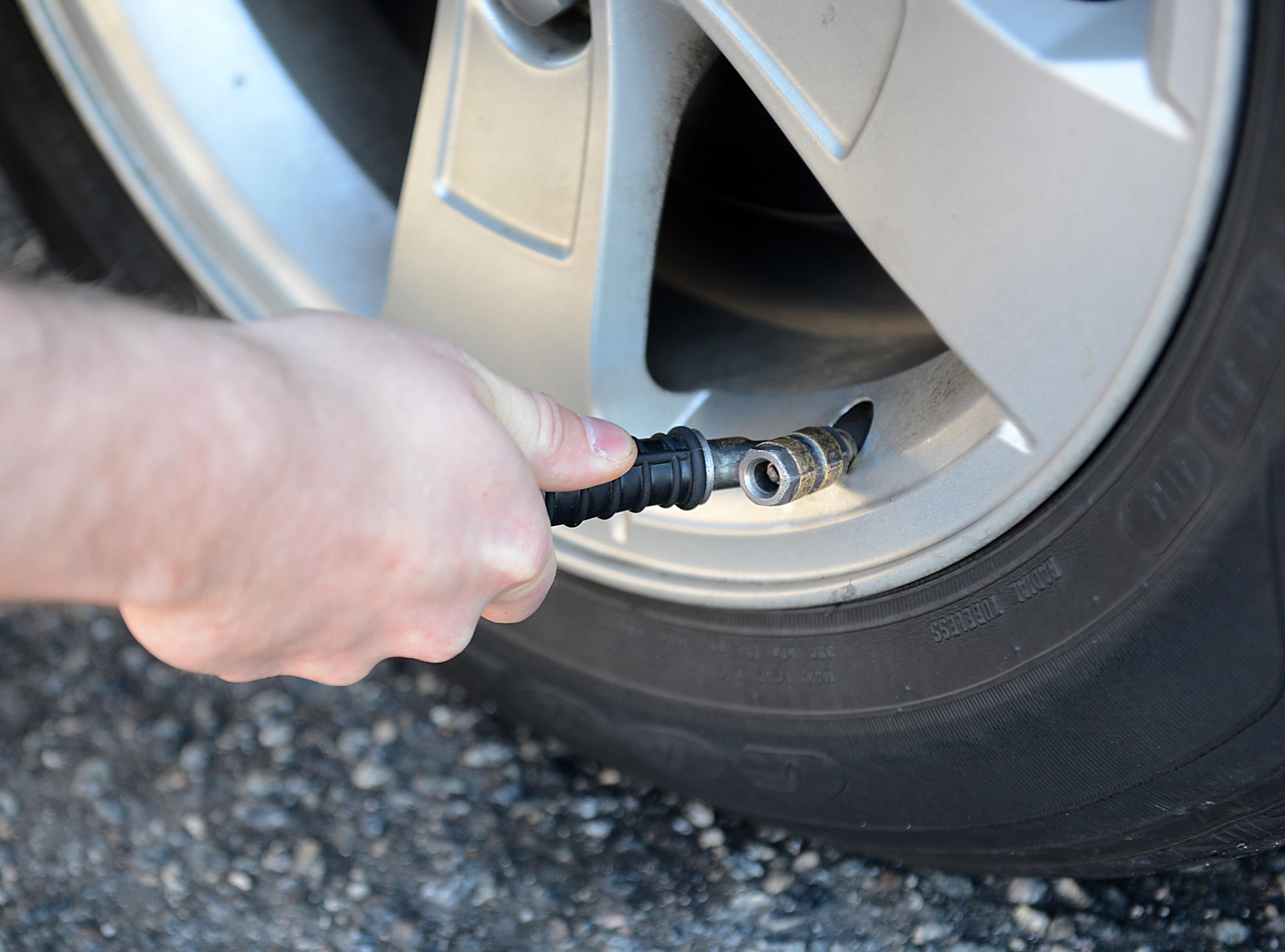
If your car is due its MOT or a service, make sure to take it in to a garage to get it ready for the road. If you’re looking for a reputable, local, independent garage you can head to the Trust My Garage website and use our handy ‘Find a Garage’ map to locate your nearest TMG member, operating to a Chartered Trading Standards Institute (CTSI)-approved code of conduct.
Simply pop in your postcode and our ‘Find a Garage’ map will show you all the TMG members in your area – and you can even read reviews from other customers if you’re unsure which garage is right for your needs.
What happens if I break down on the motorway?
In the event of your vehicle developing a problem the Highway Code says to leave the motorway at the next exit or pull into a service area. If you can’t do so, you should pull onto the hard shoulder and stop as far to the left as possible, with your vehicle’s wheels turned to the left.
If possible, try to stop near an emergency telephone (situated at approximately one-mile intervals along the hard shoulder).
Once you have safely pulled over, switched off the engine and removed the key from the vehicle, exit it as soon as possible. You should leave the vehicle by the passenger side door so that you’re not at risk of oncoming traffic. Make sure all passengers do the same, and that they keep well away from the carriageway.
Put the hazard lights on, and, if it’s dark, put your side lights on too. If it’s foggy, put the fog lights on if you can do so with the vehicle switched off. Generally, if you can’t see for more than 100 metres, the visibility is poor and that’s when your fog lights should be used.
The Highway Code advises that any pets travelling with you be left in the vehicle – unless you consider it to be an emergency situation. If that’s the case, take them out of the vehicle but make sure they are kept under control at all times.
You should then call for breakdown help. If you have breakdown cover and an available mobile phone, contact your provider, then try to stay calm and wait for help and support to arrive.

If you don’t have access to a mobile phone – or the battery has drained – then you need to use an emergency telephone. These are located at one-mile intervals along the hard shoulder and are easy to identify because they’re in bright orange boxes.
If you’ve broken down, you’ll need to walk to an emergency phone. Face the oncoming traffic and follow the arrows on the posts at the back of the hard shoulder. The emergency telephone is free of charge and connects directly to the Highways Agency or the police.
While on the phone, give as many details as you can – including your location – and inform the Highways Agency or police if you are a vulnerable motorist such as disabled, travelling alone, older, or with small children.
Your breakdown support will be able to assess if the vehicle requires towing away or if it can be repaired and can re-join the flow of traffic. If you can once again enter the road, be patient and wait for a safe gap in the traffic. If possible, use the hard shoulder to build up speed so you’re entering the carriageway with some momentum rather than slowly, with as little traffic as possible.
Don’t forget, weather in the UK can be unpredictable. If you’re planning a long journey, it is always a good idea to keep warm, weatherproof clothing in your vehicle as motorways offer little shelter from the elements. For an additional safety measure, you may also want to keep high-visibility clothing in your vehicle – wearing a hi-vis vest helps alert other drivers to your presence and could help prevent a potentially fatal accident.
If you’re looking for more information or would like to contact Trust My Garage, please visit TrustMyGarage.co.uk or Contact Us here.

Summer motoring – How you can stay safe on the roads with Trust My Garage
With Highways England predicting an additional 700 breakdowns on the UK’s roads in July and August, it’s more important than ever for motorists to be prepared for the Summer! Read on for our top tips on how you can stay safe this season with Trust My Garage.
Keep it cool
With a little bit of luck, in the summer temperatures heat up, giving you plenty of chance to get out and about in your car! On hot days motorists should keep a cool, circulating air current in their vehicles, as this helps keep you comfortable from the heat and alert while driving.
You should also pack bottles of water for any longer trips or days out to help keep heatstroke and dehydration issues at bay, as these can impair your driving abilities.
Many modern cars now have air conditioning, and this will help keep you cool whilst driving, but it’s wise to makes sure your air conditioning is working efficiently. To help with this, many garages offer air con “re-gas” services, where your motor’s refrigerant gas levels can be checked and topped up to ensure it works at its best.

Take a walk around your vehicle
Before setting out on any trip some basic vehicle checks could save you trouble once your journey has started. Particularly for longer travels you should, as a minimum, check:
- Engine oil – Long travel times can cause friction and damage to your engine, so be sure to keep it properly lubricated.
- Coolant – Traffic jams can cause your engine to overheat if your coolant levels are low, so keep it topped up to keep on moving!
- Screen wash – Dirty windscreens can be amplified by bright sunlight, so make sure yours can be clean both inside and out
- Tyre pressures and treads – Tyres should meet the legal minimum requirement of 1.6mm across the central three-quarters of the tyre in a continuous band around the whole of the tyre with no bulges, bubbles, cuts or tears, or you risk a £2500 fine and three penalty points per tyre – or worse! Tyre pressures should match the BAR/PSI indicated in your vehicle’s Owners’ Manual.
- Fuel level – Running out of fuel is one of the most common causes of breakdown on the UK’s motorway network, so check you’ve got enough fuel for your trip and take note on any available fuel stations en-route to fill up as necessary.
- It’s also recommended that you check your lights and wipers just to makes sure they too are in working order and good condition.
- Don’t forget, this is the UK and we can have a down pour at any time and after a dry spell – the first rainfall can result in a slippery road surface, so be prepared to adjust your speed and driving style to match any changes in driving conditions.

Consider your allergies and medication
The NHS estimates that there are 10 million people with hay fever in England alone, and in summer symptoms can be severe. While driving with your windows open is a nice way to enjoy a summer breeze, it can also lead to streaming eyes and sneezing fits for hay fever sufferers!
Medication is available to combat these symptoms, but you should always check labels prior to driving to make sure any side-effects, such as blurred vision and drowsiness, won’t affect your driving ability. If you are ever unsure of any medication’s side effects, you should always check with your doctor.

Check your routes (and alternatives!)
Heavy traffic can ruin a summer trip, so research your route before you set off! By checking routes before you leave you can help alleviate the stress of being stuck in a traffic jam. If you do get caught out on the road look for diversion signs, or ask a passenger to try a find a suitable alternative route. If you want to avoid peak traffic, avoid travelling on Sunday evening before school terms start and steer clear of rush hour motoring.
Most of us use satnavs to find our way around these days but it’s always a good idea to have a map book in your car too, just in case. You never know, switching off the sat nav and finding a interesting place to take a break from driving might just help you relax a little and enhance your trip.
Remember: rule 149 of the Highway Code states that you MUST NOT use a hand-held mobile phone or similar device when you’re driving. Make sure that you check the travel news before you leave, or use the live traffic function if you own a sat-nav with traffic update features.
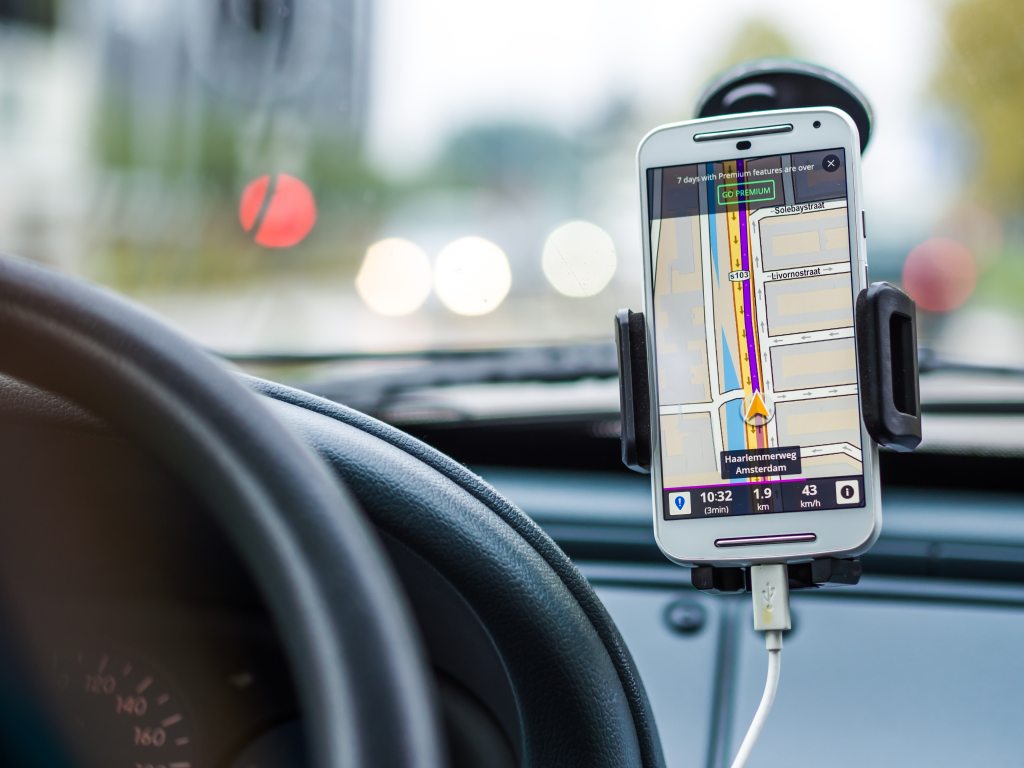
Take the time to Trust My Garage
If your car is due its MOT or a service, make sure to take it in to a garage to get it ready for the road. If you’re looking for a reputable, local, independent garage you can head to the Trust My Garage website and use our handy ‘Find a Garage’ map to locate your nearest TMG member, operating to a Chartered Trading Standards Institute (CTSI)-approved code of conduct.
Simply pop in your postcode and our ‘Find a Garage’ map will show you all the TMG members in your area – and you can even read reviews from other customers if you’re unsure which garage is right for your needs.

You can also check out our latest TV advert below:
If you’re looking for more information or would like to contact Trust My Garage, please visit TrustMyGarage.co.uk or Contact Us here.
If you’re looking for more information or would like to contact Trust My Garage, please visit TrustMyGarage.co.uk or Contact Us here.

What to do when… you’re driving in wet weather conditions
The British Summer can be a challenging time for motorists, with changeable weather meaning drivers must be adaptable to a variety of driving conditions. While we all hold out for sunshine, rain is far more likely – but the Trust My Garage blog can help you make sure you drive safely in wet weather!

Why can rain be dangerous for motorists?
Rain is not only an inconvenience for motorists; it can also be a dangerous problem. The Highway Code states that in wet weather vehicle stopping distances are double those required for dry conditions, as tyres have less grip on the road.
Drivers should always take additional precautions when on the road in wet conditions, such as:
- Maintaining a safe distance from the vehicle ahead of you
- Ensuring your vehicle’s steering is responsive – if it becomes unresponsive you should ease off the accelerator and gradually slow down
- Keeping lights on where appropriate to be visible, as the rain and spray from vehicles may make it difficult to see and be seen
- Being aware of the dangers of spilt diesel that will make the surface very slippery
- Taking extra care around pedestrians, cyclists, motorcyclists and horse riders
A major issue on very wet roads is aquaplaning – an issue caused when a layer of water is allowed to build up between a vehicle’s tyres and the surface of the road beneath. At this point, the tyres cannot grip on the road and this causes a lack of traction which means the driver loses control and is unable to steer, brake or accelerate.

To avoid aquaplaning it’s important to check your tyres (read on for more tyre tips!), not drive too quickly and don’t make sudden manoeuvres that enable water to build up between your vehicle’s tyres and the road. If you’re following a vehicle you can also follow their “tracks” from a safe distance to remain on the part of the road where water has already been displaced, providing more grip.
How can I prepare myself?
Before setting off on any trip be sure to plan the route you’re going to take, and an alternative if you think there could be issues due to poor weather. Using a sat-nav with traffic updates can also help you adjust your route if there are long delays or hazards ahead, but it’s worth keeping traffic alerts on your vehicle’s radio system too, in case there are any sudden changes to the road conditions.
If a problem occurs once your trip is underway you can also find a safe place to pull over – such as a roadside refuge area or lay-by – park up and turn off the engine completely, remove your keys from the vehicle ignition and use your mobile phone to calculate an alternative route.
If you have concerns about your driving ability in poor conditions, it’s always better to wait until you feel safe on the roads. Although it may seem inconvenient your safety and the safety of any passengers you may also have is of utmost importance – as well as that of other road users.

How can I prepare my vehicle?
Prior to setting off it’s important to check your vehicle is in a safe and roadworthy condition. One of the most crucial things to check is tyres, so this is what you need to know:
- Make sure your tyre pressures are correct. It’s easier than you might think! You can check and correct your tyre pressure at most UK petrol stations using a pay-per-use air and water station, or you can purchase your own tyre pressure gauge – the choice is yours.
- If you aren’t sure what pressure is correct for your vehicle’s tyres you can refer to your Owner’s Manual. Details should be provided in either/both BAR and PSI, and you can adjust your pressures to the recommended figure.
- Tyres should meet the legal minimum requirement of 1.6mm across the central three-quarters of the tyre and in a continuous band around the whole of the tyre, or risk a £2,500 fine and three penalty points per tyre – or worse!
- For optimum safety it is recommended tyres have a minimum of 3mm depth of tread across the central three-quarters of the tyre and in a continuous band around the whole of the tyre.
- There should be no cuts or bulges in the side wall of the tyre, as these can increase the chances of blowouts while on the road – if any bulges, bubbles, cuts and tears are visible you should speak to a professional to arrange a replacement
- You should also check for punctures prior to setting off – they can either be repaired or the tyre can be replaced, but it’s important to identify any issues and have a professional assess the best course of action.

Wipers play a huge role in ensuring good visibility in inclement weather, so checking their function is a must before driving in wet weather. While they should ideally be replaced six-monthly to yearly, if you notice a decline in visibility you should change them sooner. Factors such as streaking, smearing, skipping and squeaking indicate that your blades should be changed to retain good vision of the road – and don’t forget to check your rear wiper too!
Another area that should always be thoroughly checked is your vehicle’s lights. A sudden heavy downpour can cause quickly darkening road conditions, so functioning lights play an important role in keeping your visibility levels up and keeping you easily identifiable to other motorists.
Before setting off on a journey, turn on your vehicle’s lights and either walk around the vehicle to conduct a check or ask a passenger to check all your lights are working correctly – be sure to press the brake too and check that all three lights are working. If any lights are dim or aren’t working, including fog lights and number plate lights, you should get them replaced as soon as possible.

If you are stopped by police for having faulty brake lights, you could receive:
- A verbal warning
- A Roadside Prohibition Notice – which gives you 10 days to get it fixed
- A £60 fine and 3 points on your licence
- Worst case scenario – they could tow your car away!
It’s also a good idea to familiarise yourself with your car’s ventilation system. Wet conditions can cause a car to steam up, making visibility difficult and driving hazardous. Many people think air conditioning is only for hot days, but this is not the case! Using your car’s air conditioning in conjunction with the heater may seem an odd thing to do, but it can actually remove moisture from the air, helping to demist your vehicle quicker than using the heater alone.
Most importantly during extreme weather conditions it’s important to stay warm and dry, so it’s a good idea to ensure your car is kitted out with emergency supplies such as blankets, first-aid kits and extra food and drink if you’re undertaking longer trips.
In need of a professional?
If your car is due its MOT or a service, make sure to take it in to a garage to get it ready for the road. If you’re looking for a reputable, local, independent garage you can head to the Trust My Garage website and use our handy ‘Find a Garage’ map to locate your nearest TMG member, operating to a Chartered Trading Standards Institute (CTSI)-approved code of conduct. You can also check out our latest TV advert below:
Our ‘What to do when…’ series can provide some further tips and insight across other areas of motoring and vehicle maintenance to help you ensure your motor is running at its best! You can check out our other posts in the series here.

Why motorists have the Right to Choose when it comes to vehicle servicing and repair
The motor industry is currently filled with news about Block Exemption Regulation (BER) – but what is it and how does it affect motorists and their vehicles? Find out with the Trust My Garage blog!
What is Block Exemption Regulation (BER)?
The Block Exemption Regulation is an exemption in the automotive industry which excludes some companies from certain business activities in order to create competition. This means that in the past, main dealer networks were allowed to control who could sell and repair their cars and have access to technical repair information.
It is especially relevant with many modern cars, as before changes to the BER in 2002 motorists risked invalidating their main dealership vehicle warranty by using independent garages for servicing new vehicles.
This barrier was broken when the European Commission (EC) passed a law allowing vehicle owners the freedom of having their servicing and repairs carried out by their chosen independent garage. The law aimed to protect the consumer by providing them with freedom of choice when it comes to having their vehicle serviced and to provide fair competition within the automotive aftermarket.

It is still a common misconception that using a garage outside of a main dealer network will invalidate a vehicle’s warranty, but this is NOT the case – owners can take their vehicle to any garage they choose, provided that the garage follows the manufacturer’s servicing schedule, utilises manufacturer or matching quality parts, and uses the correct oils and fluids. If the garage follows their procedures correctly, a vehicle’s warranty will not be invalidated.
How can BER affect motorists?
The European Regulations were renewed in 2010, meaning owners still have the freedom to choose where they take their vehicle for service and maintenance during the vehicle’s warranty period. This means an independent repairer can service your vehicle while leaving the warranty intact.
Motorists should still stick to the recommended service schedules as outlined in the vehicle service plan and have your repairer of choice fit parts of Original Equipment (OE) quality standard. You should also keep any maintenance and repair records as proof that you have met all requirements.
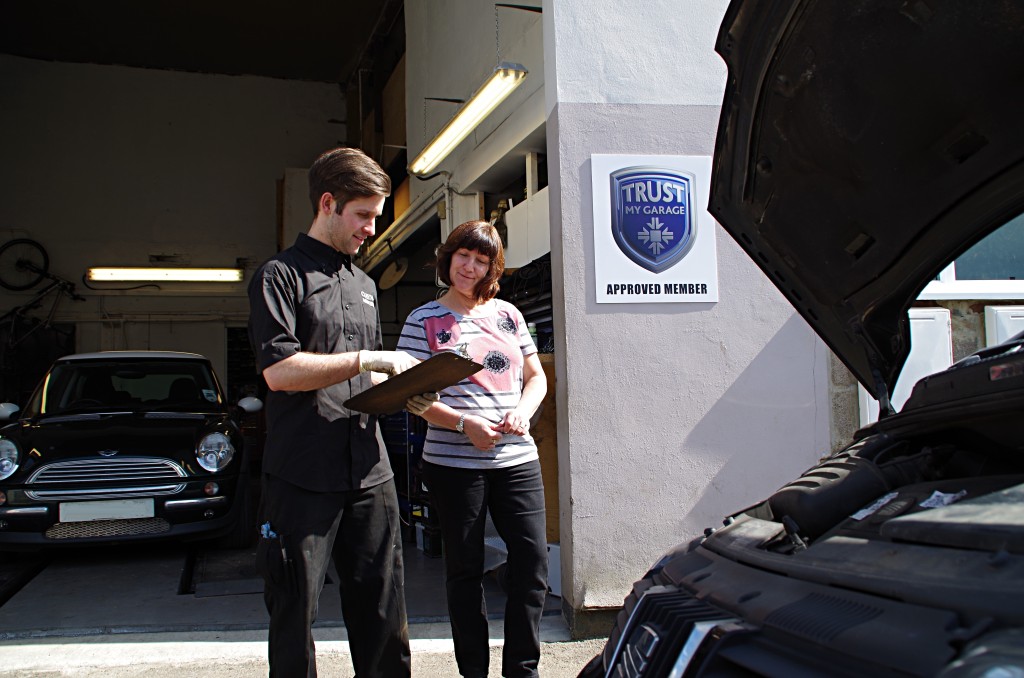
Will independent garages be able to access the same technical data as dealerships?
Thanks to BER, independent Garages can usually access technical information, or Digital Service Records, through online manufacturer portals. They have the right to access this information, so should not encounter any issues while conducting servicing and repairs.
Which garage should I choose for servicing and repair?
Trust My Garage is a collection of Britain’s best local garages – every one different and every one dedicated to the highest standards of skill and personal service. With over 2,900 members across the UK, you’re never far away from a Trust My Garage member!
To find out more about why you should Trust My Garage you can also check out our new TV advert below:
We’ve even created a handy search function so you can locate your nearest TMG-approved garage with ease. Try it out here:

Since 2016 Trust My Garage members have all operated to a strict Code of Conduct, which has been approved by the Chartered Trading Standards Institute (CTSI) – the national body for trading standards professionals. Trust My Garage is currently the only CTSI backed code exclusively for independent garages, so you can rest assured that you are dealing with a firm that is determined to deliver the highest levels of customer satisfaction.
Want to know more about TMG? To get more information or to contact Trust My Garage, please visit TrustMyGarage.co.uk or Contact Us here.

Car Repair DIY – Why you should Trust My Garage when it comes to fixing your vehicle
A new study has found 57% of UK drivers now attempt some repairs and maintenance on their cars in a bid to save money and time – but when it comes to service and repair, it’s best to let a skilled professional help you get the most out of your vehicle.
Although motor maintenance used to be a Sunday morning pastime, developments in vehicle technology over the last few years means that cars have become increasingly complex and this kind of home maintenance is no longer practical, safe or even cost-effective. By using a trained vehicle technician you’re ensuring quality and safety, so check out why it’s best to Trust My Garage below!

Why do motorists want to DIY their vehicle repairs?
Of the 2,308 UK motorists surveyed, one in five (21%) admitted to trying to make larger repairs to their vehicles, such as replacing parts – but why? The top reasons that caused motorists to get hands on were found to be:
- To avoid excessive garage fees – 39%
- I at least wanted to try and save myself some money – 24%
- The repairs seemed simple to make / there are tutorials online for everything – 21%
- I worry mechanics will rip me off – 10%
- I don’t have the time to be booking into a garage – 6%
Most of the reasons provided reflect a lack of trust in garages as motorists face a bewildering variety of choices in garage services and it can be hard to determine how to ensure quality of service at the right price.

With Trust My Garage the answer is in front of you! We want to ensure that any motorist can find a trusted local garage for all repairs – whether simple or complex – in the certain knowledge that the price will be right for the work involved.
You can easily locate your nearest member using our “Find a Garage” map – and even read honest reviews from other motorists about the quality and service provided to you and your vehicle. There are even photos of our member’s garages, so you can see exactly where you could take your motor! Want to find out more for yourself? Give it a try here:
But will DIY-ing it save you money?
When asked if their DIY repairs fixed the problems they’ve encountered, 62% said it had. However, of the remaining 38%, two-thirds of respondents admitted they often pay more between £80 and £170 to rectify the work they have attempted themselves.
The top repairs attempted before being taken into a garage to be sorted were ‘knocking out a dent’ (17%), painting an area of the car’ (15%) and ‘fixing a head gasket’ (12%).
Of course, if a motorist feels comfortable with repairing minor issues such as changing a headlamp bulb or windscreen wiper then it could save them money – but with larger repairs and replacements, it’s vital to let a trained technician work on a vehicle to ensure any work is conducted safely, thoroughly and to a high standard of workmanship.

How does Trust My Garage benefit drivers?
By visiting a Trust My Garage member, you can get a fixed quote or estimate, both of which are inclusive of parts, labour and VAT – so you know how much your repair will cost before any work is completed. On top of that, our members promise to only charge for any work completed, and any parts that are supplied and fitted to the vehicle. If you want to read more information, you can check out our Code of Practice here.
By using a TMG-approved member, you’re visiting a garage that adheres to a CTSI (Chartered Trading Standards Institute)-approved Code of Conduct. Our code means that you and your vehicle get the best service possible, no matter which TMG member you visit – so there’s no need to worry about doing it yourself when excellent service is on your doorstep!
Why should you leave it to the professionals?
Although wanting to save money is an understandable premise, vehicles are complicated pieces of machinery and it’s always best to let a trained technician do their job – after all, they understand the ins and out of the vehicles that drive on to their premises.
As well as this, the study shows that it’s a strong possibility you could end up paying even more to rectify a DIY error, so you could be out of pocket and still be left with a problem on your vehicle. If you’re attempting a larger repair, it could even leave your motor in an unsafe state.

More about Trust My Garage
Trust My Garage is a collection of Britain’s best local garages – each one different and all dedicated to the highest standards of skill and personal service.
All the garages in Trust My Garage are members of the Independent Garage Association which is part of the RMI, one of Britain’s oldest motor trade organisations. IGA members are true professionals who must comply with a strict code of practice, so every customer of all Trust My Garage members can rely on using a nationally recognised brand to help you and your vehicle get the best value service for your money.
Visit TrustMyGarage.co.uk for more information – and be sure to check out our Facebook, Twitter and YouTube pages too!

Fuel-efficient driving – How can you make your motor’s MPG go the extra mile?
As of December 2018, BBC News’ Fuel Price Calculator revealed the price of fuel per litre across the UK stood at £1.24 and £1.34 for petrol and diesel vehicles respectively (source). With the cost of filling up the tank on the rise, Trust My Garage has some top tips on how to drive economically and make your MPG go further – check them out below!
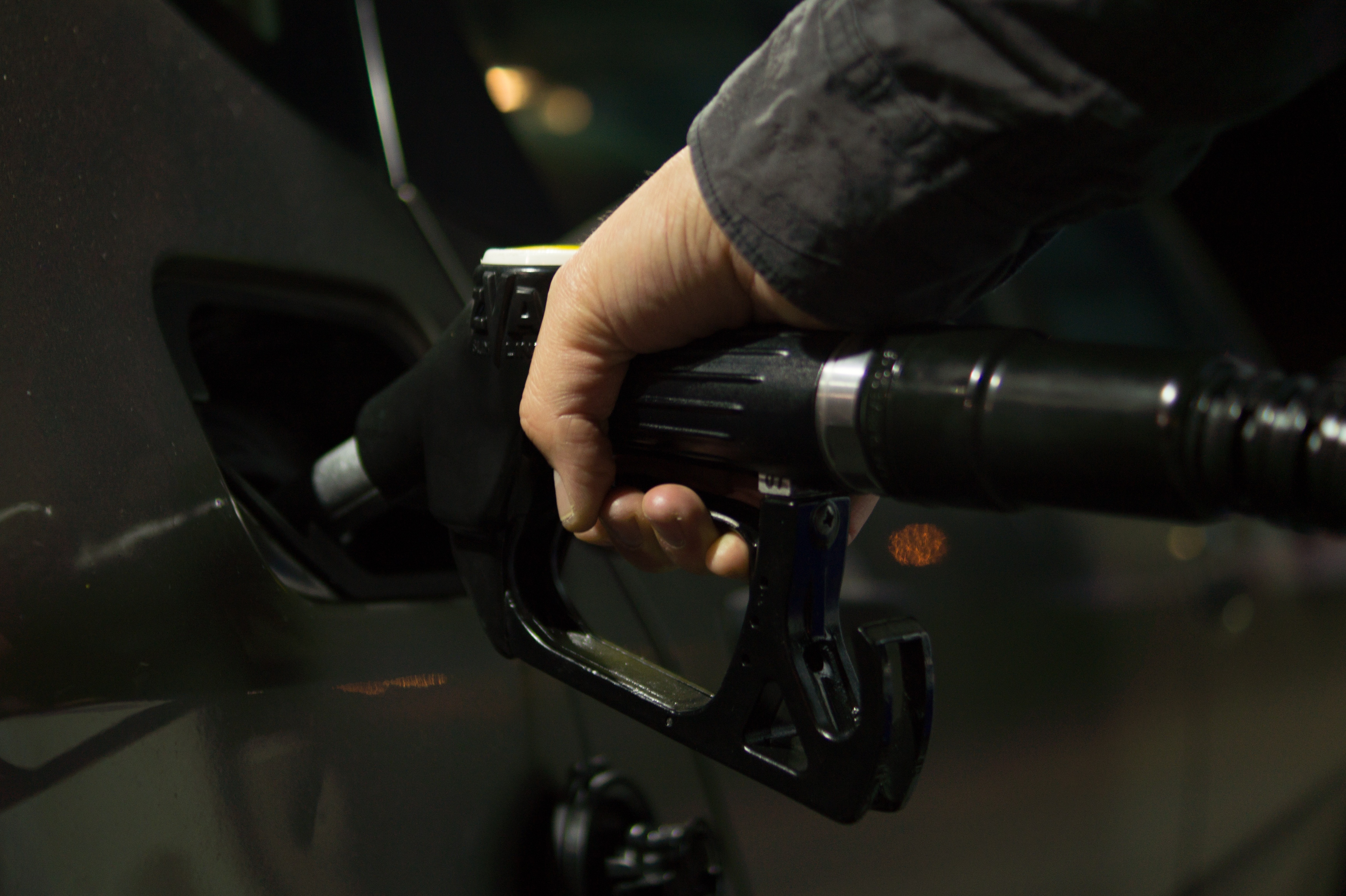
Condense your time on the road
Did you know that when you drive a car that has been parked for a few hours the engine is cold and it uses more fuel to power the engine for the first five miles or so? By combining your errands into one daily trip you can save your pennies and your mileage – meaning your miles will last longer between trips to the pump.

Stick to the speed limit
This one should be a given for responsible driving, but stick to the speed limits! What Car? research shows that a vehicle going at 80mph uses up to 25% more fuel than one going at 70mph.
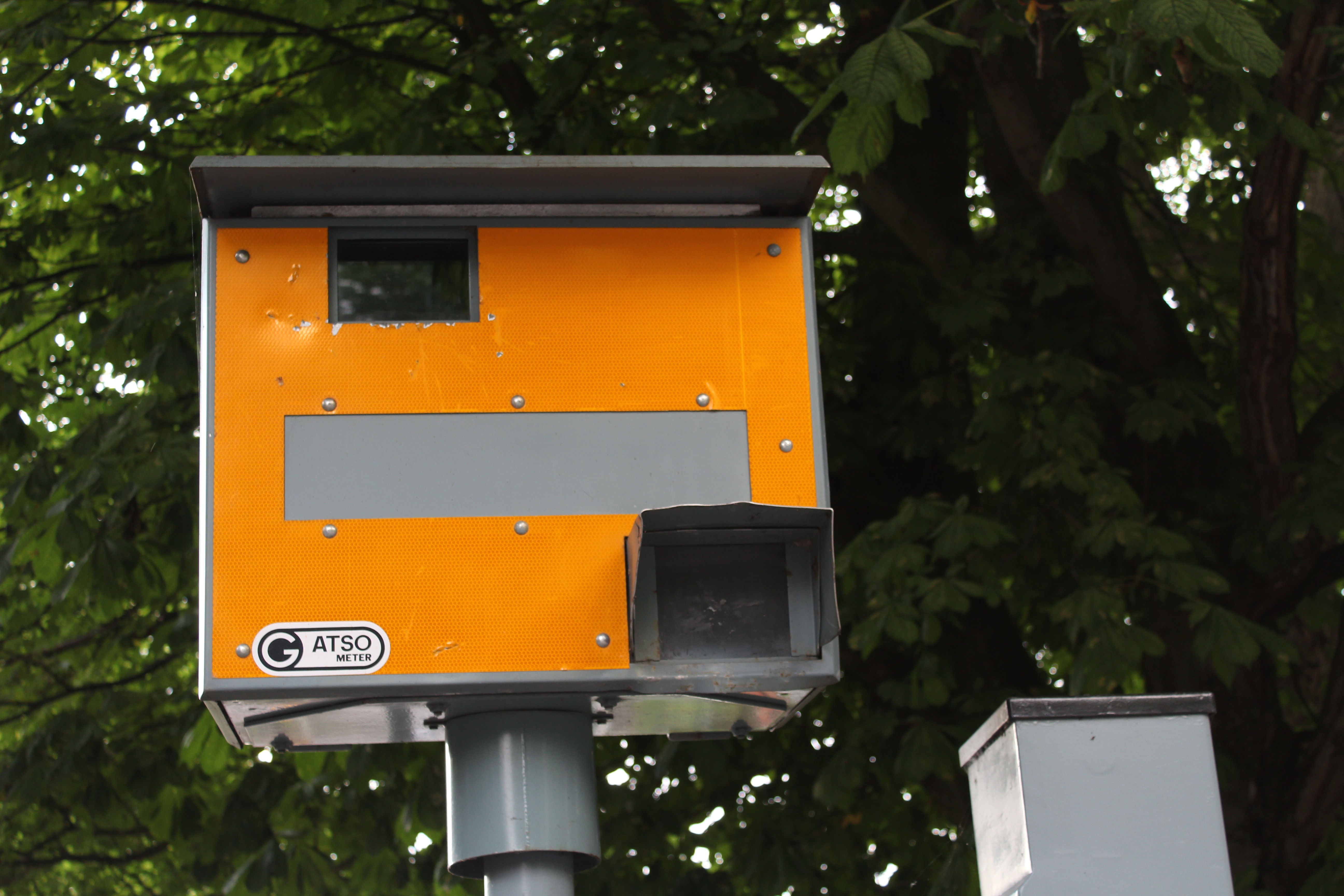
Spend a minute on maintenance
One of the best ways to improve your fuel efficiency is to keep your car well maintained and serviced regularly. By ensuring your car is running optimally you can utilise your fuel and go further for your pounds, even if it’s just pumping up your tyres to the correct pressure! If you’re not sure on how best to go about maintaining your car, check out our latest maintenance blog post: “Winter driving – how to stay safe when the cold hits”.
If you think your car could be in need of a service, you need a helping hand when it comes to good maintenance practice, or you think your motor could be in need of a repair, your local Trust My Garage member can help. Not sure if there’s a member near you? Pop your post code into TMG’s ‘Find a Garage’ map and we can tell you who’s nearby!
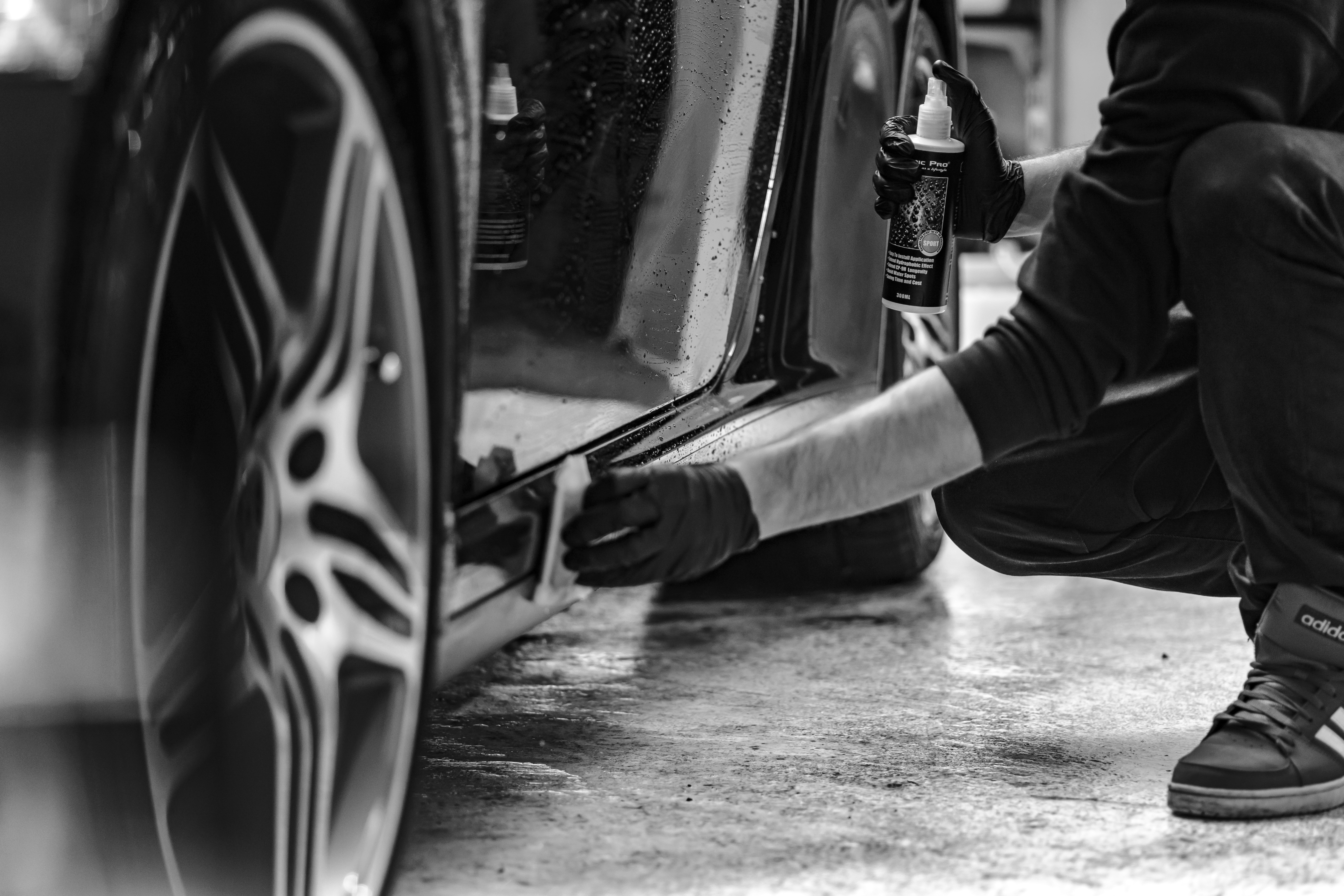
Air-con? Air-gone!
Car heaters don’t, in general, use up much fuel as they recycle the heat from the engine. Air conditioning, however, does. It’s definitely the case if you have an older vehicle but it’s much less noticeable with modern cars. Remember that using your air-con regularly is a good thing, as it keeps the seals in good condition. It also dries the air so that it’s as useful to you in winter as it is in summer for keeping your windscreen de-misted. But what about opening windows instead? When it comes to keeping them down it may affect fuel consumption at more than 40mph, but air conditioning marginally increases fuel use at all speeds.
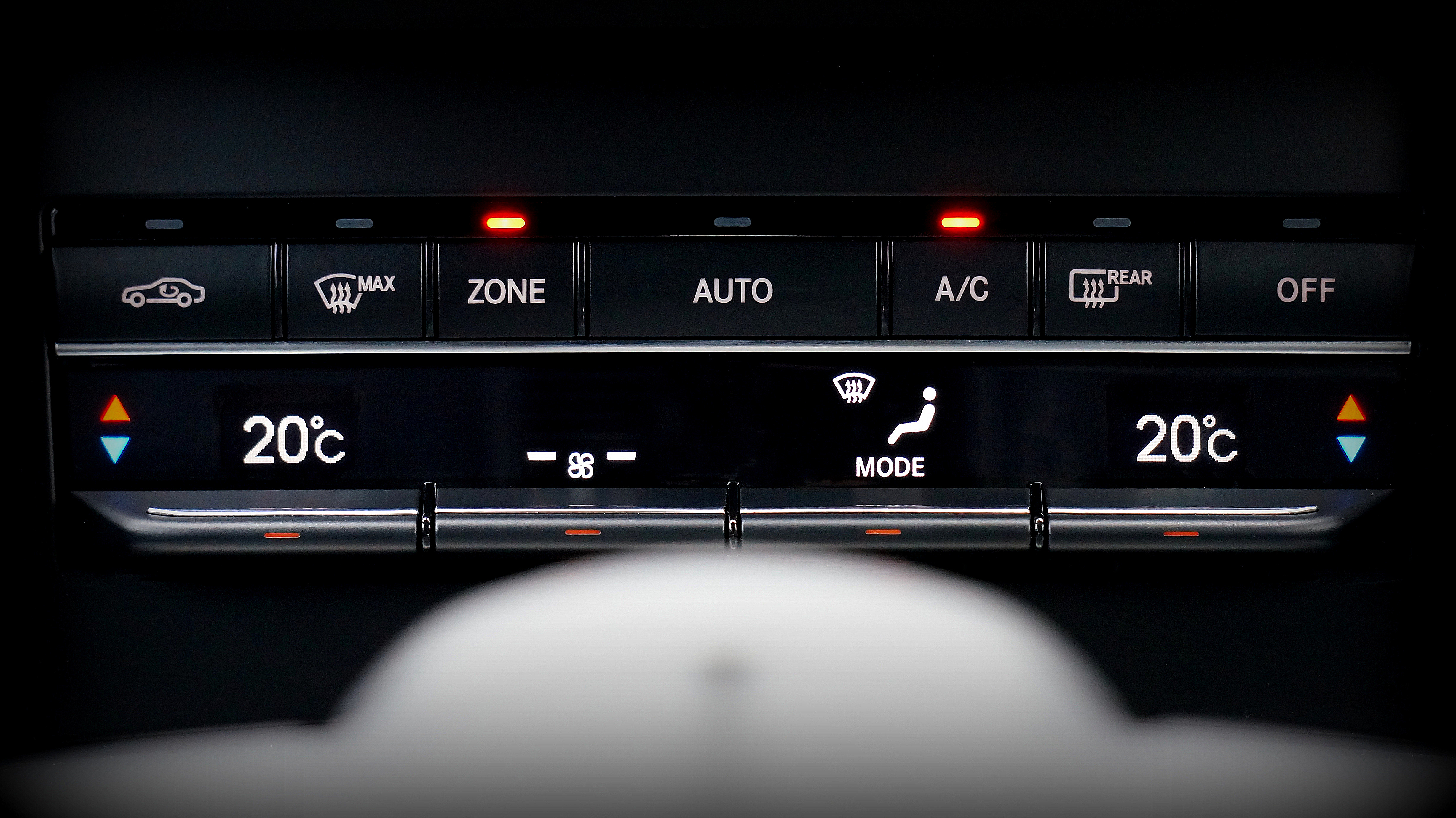
Keep F1 on the track
“Slip-streaming” behind other vehicles to help save fuel is a technique Formula 1 drivers adopt, but it is highly dangerous and frowned upon by road safety experts. Similarly, switching off the engine whilst moving and coasting to a stop is also deemed to be extremely reckless – so don’t bring racetrack habits to the road.

Take a weight off
Just like your body, your car needs more fuel to move around more weight, which means you shouldn’t cart items around in your boot unless you absolutely need to. You can also reduce weight by filling up with less fuel, more often. You’d be surprised how much more a full tank of fuel weighs than half a tank!
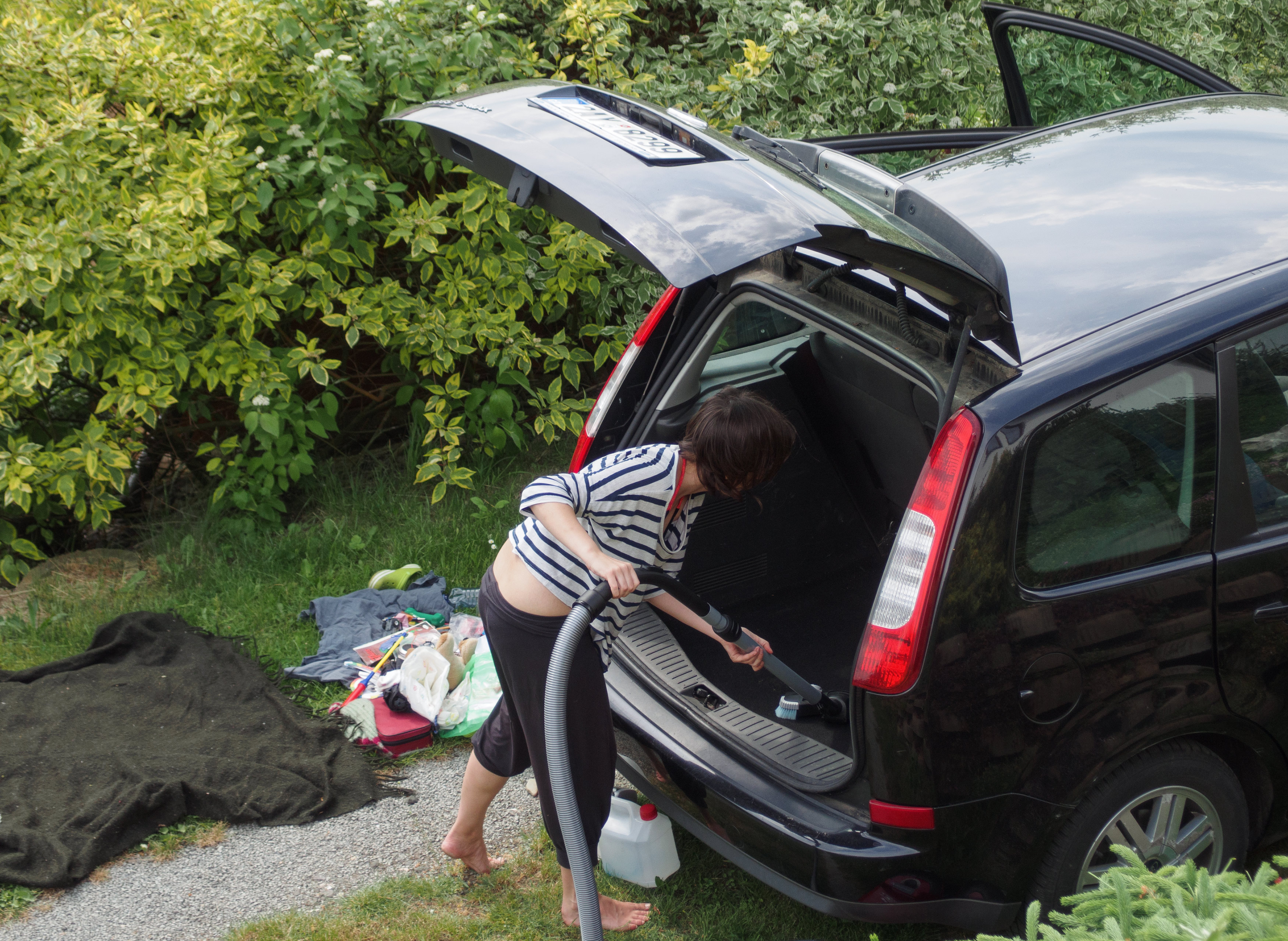
Read the road and use gravity
Use gravity to your advantage and build up momentum by pushing on downhill to power through inclines. This may sound confusing, but a good way to do this is to read the road as if you were on a pushbike and accelerate accordingly. While doing this, be sure to look far ahead while driving and keep moving where possible by anticipating obstacles. Easing off the throttle and keeping momentum is better than speeding up, braking and then starting all over again.

What is Trust My Garage?
Trust My Garage is a collection of Britain’s best local garages – every one different and every one dedicated to the highest standards of skill and personal service. All the garages in Trust My Garage are members of the Independent Garage Association – which is part of the RMI, one of Britain’s oldest motor trade organisations. IGA members are true professionals who have to comply with a strict code of practice.
Each and every customer of all Trust My Garage members can rely on using a nationally recognised brand. If there’s a problem that can’t be sorted out between you and your garage, the IGA takes over and helps to achieve a happy outcome.
For more information about Trust My Garage or to locate your nearest TMG member visit www.trustmygarage.co.uk.









